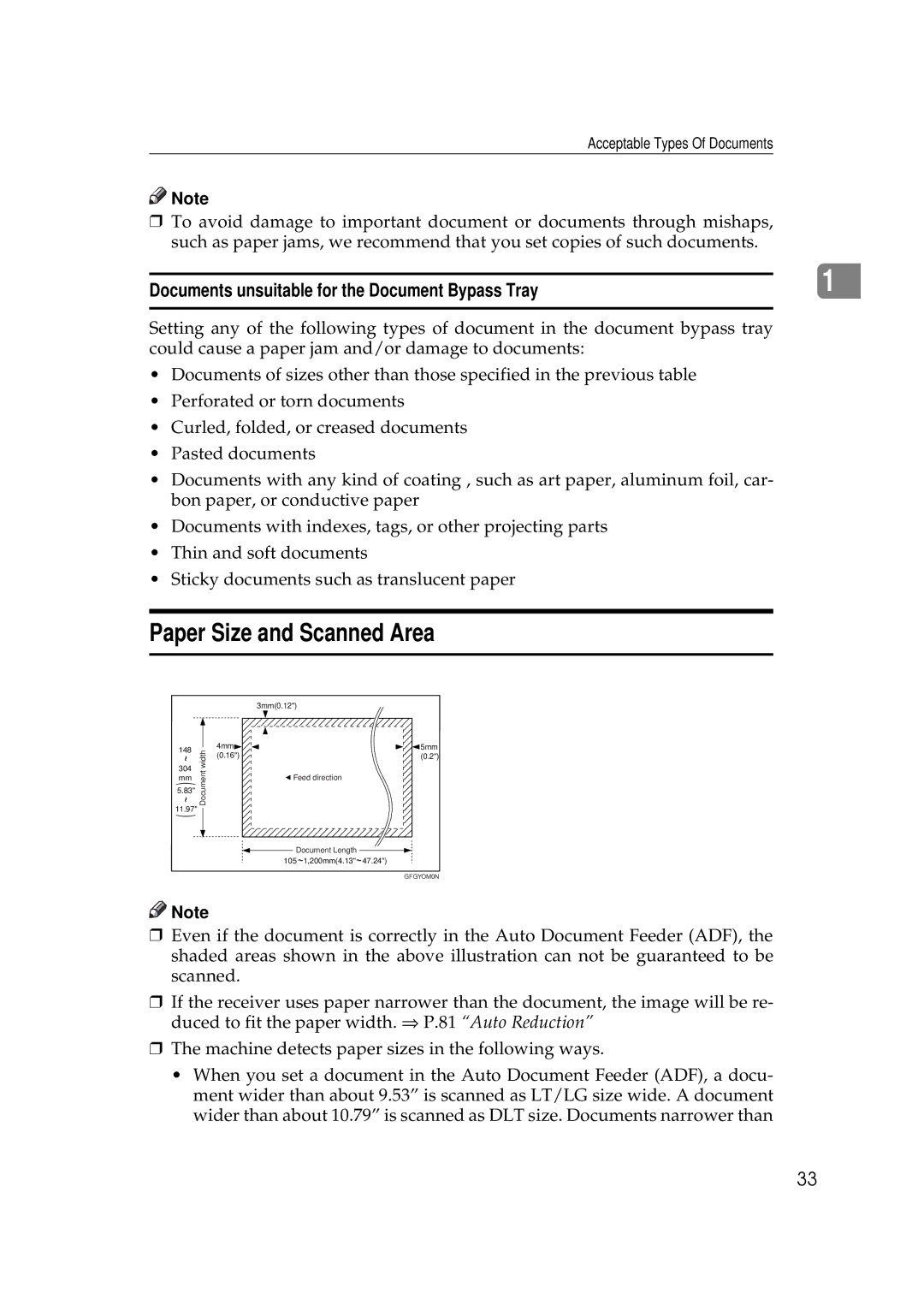
Acceptable Types Of Documents
![]()
![]() Note
Note
❒To avoid damage to important document or documents through mishaps, such as paper jams, we recommend that you set copies of such documents.
|
|
|
|
| 1 |
Documents unsuitable for the Document Bypass Tray | ||
|
|
|
Setting any of the following types of document in the document bypass tray could cause a paper jam and/or damage to documents:
•Documents of sizes other than those specified in the previous table
•Perforated or torn documents
•Curled, folded, or creased documents
•Pasted documents
•Documents with any kind of coating , such as art paper, aluminum foil, car- bon paper, or conductive paper
•Documents with indexes, tags, or other projecting parts
•Thin and soft documents
•Sticky documents such as translucent paper
Paper Size and Scanned Area
|
|
| 3mm(0.12") | |
148 | width | 4mm | 5mm | |
(0.16") | (0.2") | |||
| ||||
304 |
|
| ||
Document |
|
| ||
mm |
| Feed direction | ||
5.83" |
|
| ||
11.97" |
|
| ||
|
|
|
![]() Document Length
Document Length ![]() 105 1,200mm(4.13"
105 1,200mm(4.13"![]() 47.24")
47.24")
GFGYOM0N
![]()
![]() Note
Note
❒Even if the document is correctly in the Auto Document Feeder (ADF), the shaded areas shown in the above illustration can not be guaranteed to be scanned.
❒If the receiver uses paper narrower than the document, the image will be re- duced to fit the paper width. ⇒ P.81 “Auto Reduction”
❒The machine detects paper sizes in the following ways.
•When you set a document in the Auto Document Feeder (ADF), a docu- ment wider than about 9.53” is scanned as LT/LG size wide. A document wider than about 10.79” is scanned as DLT size. Documents narrower than
33
